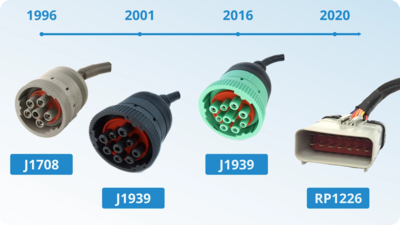
Understanding the Basics
Hours of Service (HOS) regulations have been in place since the 1930s and are a vital part of ensuring driver safety on our roads. Almost all commercial carriers, including truck drivers, are required to follow these regulations, which are determined by the Federal Motor Carrier Safety Administration (FMCSA).
One important rule under HOS regulations is the 30-Minute Break Rule. After every 8-hour period of driving, truck drivers must take a break of at least 30 minutes. This rule helps prevent driver fatigue and ensures that drivers are alert and focused on the road.
Another key regulation is the 11-hour Driving Limit/14-hour Limit. Drivers must not spend more than 11 hours driving after a period of 10 hours off duty, and their total on-duty time cannot exceed 14 hours. This rule is crucial for preventing exhaustion and maintaining driver alertness.
It's worth noting that the FMCSA periodically revises HOS rules to adapt to changing industry needs. The most recent major revision occurred in 2020, reflecting ongoing efforts to improve driver safety.
For a comprehensive understanding of current HOS regulations, it's advisable to visit the FMCSA's website. Here, you'll find an up-to-date list of all the rules and guidelines that truck drivers and other commercial carriers must follow.
By following these HOS regulations, we can ensure that our drivers stay safe on the road and help create a safer environment for everyone.
HOS Exemptions- Does Your Fleet Qualify?
If you're a trucking company or a carrier, you might be wondering if your fleet qualifies for any exemptions from the Hours of Service (HOS) regulations. The good news is that the Federal Motor Carrier Safety Administration (FMCSA) has granted exemptions to certain companies and carriers for specific types of cargo. These exemptions can provide some flexibility regarding certain HOS regulations.
Many of these exemptions pertain to the 30-minute break rule. This rule requires truck drivers to take a break of at least 30 minutes after every 8 hours of driving. However, if your fleet falls under one of the qualifying exemptions, your drivers may not have to follow this rule.
One such exemption is the Short-Haul Exception. To qualify for this exception, drivers must operate within 150 air miles of their work location and spend no more than 14 hours on duty. If your drivers meet these criteria, they are not required to keep Record of Duty Status (RODS), use an Electronic Logging Device (ELD), or follow the 30-minute rest break rule.
Another exemption is the Adverse Driving Conditions Exception. This exception allows drivers an additional 2 hours on their normal driving window when they encounter poor driving conditions. It provides some leeway for drivers to navigate safely in challenging weather or road conditions.
If your fleet meets any of these qualifications, it's worth exploring the HOS exemptions available. Taking advantage of these exemptions can help you better manage your drivers' schedules and ensure compliance with the regulations that are most relevant to your operations.
You can find a full list of specific HOS exemptions here.
The Do-It-All Fleet Management Platform.
Start Today, No Contract. No CC.
Best Practices for Managing HOS in Your Fleet
Managing HOS regulations in your fleet is crucial for ensuring fleet safety and avoiding costly fines, suspensions, or even shutdowns. One of the most important best practices is to fully understand and educate your truck drivers on the current HOS rules. Make sure they are aware of the consequences of HOS violations, such as the increased risk of accidents due to driver fatigue. Stay up-to-date on any revisions to the HOS rules to ensure compliance and prioritize the well-being of your drivers and the overall safety of your fleet.
Using Technology to Streamline HOS Compliance and Improve Efficiency
Using technology, such as Electronic Log Devices (ELDs), can greatly streamline HOS compliance and improve efficiency in your fleet. ELDs are valuable tools for tracking HOS, especially since carriers required to keep Record of Duty Status (RODS) are also required to use ELDs. With an ELD, the record-keeping process becomes simpler, and drivers can easily keep track of HOS exemptions. However, it's important to note that the FMCSA has specific requirements for ELDs, and using an ELD that doesn't meet these requirements can result in hefty fines or even suspension of operations. That's why it's crucial to choose a reliable ELD provider like TruckSpy, which offers an ELD that meets all FMCSA requirements. See if a Truckspy ELD could be right for your fleet.
Recent Blogs
by Elyse Byers
July 5, 2024




